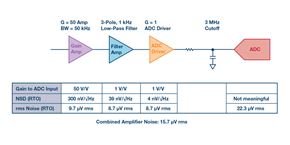When considering analog circuit design, noise is a persistent topic. It can directly affect the amount of information that can be extracted from a measurement as well as the management of how the information is gathered. There is still a lot of misinformation and confusion around noise, which in turn can cause expensive design issues, underperformance and wasted resources. To understand more about noise, it’s important to explore the most common myths about noise analysis in analog designs. In this article from Analog Devices, you can learn more about these myths, including decreasing resistor values for performance improvement, including all noise sources in hand calculations, choosing the amplifier with the lowest voltage noise and more. Read on to uncover all 11 myths about noise in this informative article.

